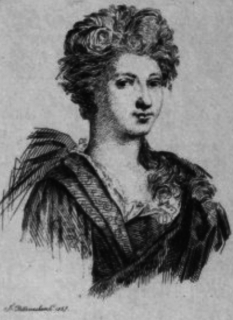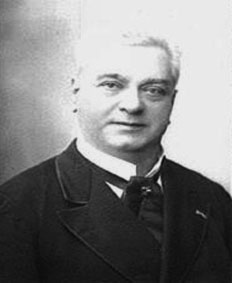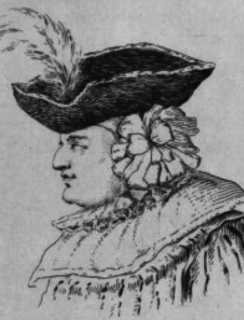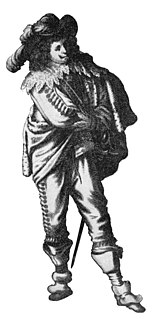Sources
Bert Edward Young and Grace Philputt Young, Le registre de La Grange (1659-1685), Paris, E. Droz, 1947, vol. I, p. 238–244.
As of 24 August 1680, La Grange set in his register:
The new troupe consisted of 27 people, that is 15 actors and 12 actresses. The first performance took place on 25 August with Phèdre by Racine and Les Carosses d'Orléans by La Chapelle.
Bert Edward Young and Grace Philputt Young, Le registre de La Grange (1659-1685), Paris, E. Droz, 1947, vol. I, p. 238–244.

Jean-Baptiste Poquelin, known by his stage name Molière, was a French playwright, actor, and poet, widely regarded as one of the greatest writers in the French language and world literature. His extant works include comedies, farces, tragicomedies, comédie-ballets, and more. His plays have been translated into every major living language and are performed at the Comédie-Française more often than those of any other playwright today. His influence is such that the French language is often referred to as the "language of Molière".

The Comédie-Française or Théâtre-Français is one of the few state theatres in France. Founded in 1680, it is the oldest active theatre company in the world. Established as a French state-controlled entity in 1995, it is the only state theatre in France to have its own permanent troupe of actors. The company's primary venue is the Salle Richelieu, which is a part of the Palais-Royal complex and located at 2 rue de Richelieu on the Place André-Malraux in the 1st arrondissement of Paris.

Les Précieuses ridicules is a one-act satire by Molière in prose. It takes aim at the précieuses, the ultra-witty ladies who indulged in lively conversations, word games and, in a word, préciosité (preciousness).

Marie Champmeslé was a French stage actress.
This article is an overview of the theatre of France.

Comédie-Italienne or Théâtre-Italien are French names which have been used to refer to Italian-language theatre and opera when performed in France.

Hôtel de Bourgogne was a theatre, built in 1548 for the first authorized theatre troupe in Paris, the Confrérie de la Passion. It was located on the rue Mauconseil, on a site that had been part of the residence of the Dukes of Burgundy. The most important French theatre until the 1630s, it continued to be used until 1783, after which it was demolished.
Molière's company was the theatrical company which formed around Molière from 1648 onwards, when he was performing in the French provinces after the failure of the Illustre Théâtre in 1645. In 1658 the company moved to Paris and, after a successful performance on 24 October 1658 in front of Louis XIV at the Louvre, was allowed to share the large hall in the Hôtel du Petit-Bourbon with the Italian players of Tiberio Fiorillo. At this time Molière's company became known as the Théâtre de Monsieur, since their official sponsor was the King's brother Philippe, Duke of Orléans, known as Monsieur. When the Petit Bourbon was demolished in 1660 to make way for the eastern expansion of the Louvre, Molière's troupe was allowed to use the abandoned Théâtre du Palais-Royal. The latter theatre had originally been built by Cardinal Richelieu in 1641. After Molière's death in 1673, his widow Armande Béjart and the actor La Grange kept the remnants of the company together, merging with the players from the Théâtre du Marais and moving to the Théâtre de Guénégaud. In 1680 the troupe of the Hôtel de Bourgogne joined the players at the Guénégaud, giving birth to the Comédie-Française.

La Grange, whose real name was Charles Varlet, was a French actor and a member of the troupe of Molière.

Armande-Grésinde-Claire-Élisabeth Béjart was a French stage actress, also known under her stage name Mademoiselle Molière. She was married to Molière, and one of the most famous actresses in the 17th-century.

Catherine Leclerc du Rose, also known by her stage name Mademoiselle de Brie', was a French actress. She was a member of the pioneer troupe of both the Molière's company, and of the Comédie-Française. She belonged to the first Sociétaires of the Comédie-Française.

The Salle de la Bouteille or Salle du Jeu de Paume de la Bouteille, later known as the Hôtel [de] Guénégaud or Guénégaud Theatre, was a 1671 theatre located in Paris, France, between the rue de Seine and the rue des Fossés de Nesle. It was across from the rue Guénégaud, which ran behind the garden of a townhouse formerly known as the Hôtel de Guénégaud on the quai de Nevers. The theatre was the first home of the Paris Opera and in 1680 became the first theatre of the Comédie-Française. It closed in 1689 and was later partially demolished and remodeled for other purposes.
Events from the year 1613 in France

Jules Brasseur was a French actor and singer, born 1829 in Paris and died in the same city in 1890, who achieved considerable popular success in Paris and around France in the second half of the 19th century.

Charles Chevillet, sieur deChampmeslé, was a 17th-century French actor and playwright.
Claude de La Rose, better known as Rosimond, was a 17th-century French playwright and actor.
Noël Lebreton, sieur de Hauteroche, was a French actor and playwright who died blind.

François Le Noir, sieur de La Thorillière was a French comic actor, who was born and died in Paris.

Charles Le Noir or Lenoir was a French actor-manager, who was a member of the troupe of the Prince of Orange from at least 1622, sometimes named as a co-founder with the actor Montdory of the Théâtre du Marais in 1634, and a member of the Troupe Royale at the Hôtel de Bourgogne from 1634 to 1637.
Mademoiselle La Grange (1639–1727), was a French stage actor.